Eurylaimides
Old World Suboscines
John Harshman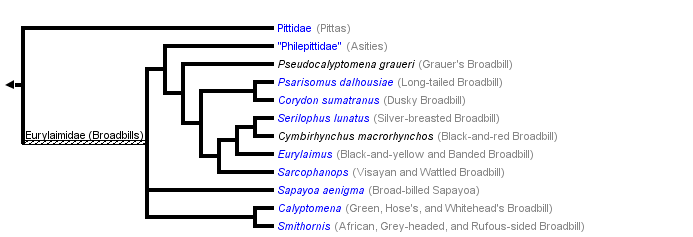


This tree diagram shows the relationships between several groups of organisms.
The root of the current tree connects the organisms featured in this tree to their containing group and the rest of the Tree of Life. The basal branching point in the tree represents the ancestor of the other groups in the tree. This ancestor diversified over time into several descendent subgroups, which are represented as internal nodes and terminal taxa to the right.

You can click on the root to travel down the Tree of Life all the way to the root of all Life, and you can click on the names of descendent subgroups to travel up the Tree of Life all the way to individual species.
For more information on ToL tree formatting, please see Interpreting the Tree or Classification. To learn more about phylogenetic trees, please visit our Phylogenetic Biology pages.
close boxRelationships after Moyle et al. (2006) and Irestedt et al. (2006).
Discussion of Phylogenetic Relationships
The Old World suboscines are a small group with only 50 species, in contrast to the New World suboscines with over a thousand. The Old World suboscines are only slightly misnamed, as they have a single New World member, Sapayoa aenigma (Fjeldså et al. 2003, Chesser 2004). Eurylaimidae (broadbills) is clearly not monophyletic, but just how paraphyletic is not yet clear. The traditional family Philepittidae (asities) is clearly included within it (Prum 1993; Irestedt et al. 2001; Barker et al. 2002, 2004; Beresford et al. 2005); this is why it's shown in quotes, since a family can't be nested inside another family. Either Eurylaimidae must be split or Philepittidae eliminated. Sapayoa probably is also included within Eurylaimidae. It is not completely clear that the two genera Calyptomena and Smithornis are within the family; it's conceivable that they are either more closely related to Pittidae or that they are the sister group of both Eurylaimidae and Pittidae (Irestedt et al. 2006, Moyle et al. 2006). Irestedt et al. (2006), looking at the same tree shown here, proposed splitting Eurylaimidae into four families: Eurylaimidae, Philepittidae, Sapayoidae (to include Sapayoa), and Calyptomenidae (to include Calyptomena and Smithornis); which classification to adopt is a matter of personal taste.
The genus Sarcophanops is sometimes submerged within Eurylaimus, but this would also require suppressing the two monotypic genera Serilophus and Cymbirhynchus (Irestedt et al. 2006), and so Sarcophanops is retained here.
References
Barker, F. K., G. F. Barrowclough, and J. G. Groth. 2002. A phylogenetic hypothesis for passerine birds; Taxonomic and biogeographic implications of an analysis of nuclear DNA sequence data. Proc. R. Soc. Lond. B 269:295-308.
Barker, F. K., A. Cibois, P. Schikler, J. Feinstein, and J. Cracraft. 2004. Phylogeny and diversification of the largest avian radiation. Proc. Natl. Acad. Sci. USA 101:11040-11045.
Beresford, P., F. K. Barker, P. G. Ryan, and T. M. Crowe. 2005. African endemics span the tree of songbirds (Passeri): Molecular systematics of several evolutionary "enigmas". Proc. R. Soc. Lond. B 272:849-858.
Bruce M.D. 2003. Family Eurylaimidae (Broadbills). Pages 54–93 in Handbook of the Birds of the World. Vol. 8: Broadbills to Tapaculos. J. del Hoyo, A. Elliott, and D.A. Christie, eds. BirdLife International and Lynx Editions, Cambridge, UK and Barcelona.
Chesser, R. T. 2004. Molecular systematics of New World suboscine birds. Mol. Phylogen. Evol. 32:11-24.
Dekker, R. W. R. J. and E. C. Dickinson. 2000. Systematic notes on the Asian birds 2. A preliminary review of the Eurylaimidae. Zoologische Verhandelingen Leiden 331:65–76.
Fjeldså, J., D. Zuccon, M. Irestedt, U. S. Johansson, and P. G. P. Ericson. 2003. Sapayoa aenigma: A New World representative of "Old World suboscines". Proceedings of the Royal Society of London, Series B (Supplement) 270:S238-S241.
Gill, F. and M. Wright. 2006. Birds of the World: Recommended English Names. Princeton NJ: Princeton University Press.
Harshman, J. 2007. Classification and phylogeny of birds. Pages 1-35 in Reproductive biology and phylogeny of birds (B. G. M. Jamieson, ed.). Science Publishers, Inc., Enfield, NH.
Irestedt, M., U. S. Johansson, T. J. Parsons, and P. G. P. Ericson. 2001. Phylogeny of major lineages of suboscines (Passeriformes) analysed by nuclear DNA sequence data. J. Avian Biol. 32:15-25.
Irestedt, M., J. I. Ohlson, D. Zuccon, M. Källersjö, and P. G. P. Ericson. 2006. Nuclear DNA from old collections of avian study skins reveals the evolutionary history of the Old World suboscines (Aves, Passeriformes). Zoologica Scripta 35:567–580.
Lambert, F. and M. Woodcock. 1996. Pittas, Broadbills and Asities. Pica Press, Robertsbridge, Sussex.
Moyle, R.G., R.T. Chesser, R.O. Prum, P. Schikler, and J. Cracraft. 2006. Phylogeny and evolutionary history of Old World suboscine birds (Aves: Eurylaimides). American Museum Novitates 3544:1-22.
Prum, R. O. 1993. Phylogeny, biogeography, and evolution of the broadbills (Eurylaimidae) and asities (Philepittidae) based on morphology. Auk 110:304-324.
Raikow, R.J. 1987. Hindlimb myology and evolution of the Old World suboscine passerine birds (Acanthisittidae, Pittidae, Philepittidae, Eurylaimidae). Ornithol. Monogr. 41:1–81.
Title Illustrations

| Scientific Name | Serilophus lunatus |
|---|---|
| Location | Bukit Tinggi, Malaysia |
| Specimen Condition | Live Specimen |
| Sex | Female |
| Source | DSC_0060_Silver-Breasted Broadbill (Serilophus lunatus), female |
| Source Collection | Flickr |
| Copyright | © 2008 Yixiong Cai |
| Scientific Name | Pitta brachyura |
|---|---|
| Location | Kerala, India |
| Specimen Condition | Live Specimen |
| Source | Indian Pitta |
| Source Collection | Flickr |
| Image Use |
 This media file is licensed under the Creative Commons Attribution License - Version 2.0. This media file is licensed under the Creative Commons Attribution License - Version 2.0.
|
| Copyright | © 2007 Nidhin Poothully |
| Scientific Name | Corydon sumatranus |
|---|---|
| Location | Kaeng Krachan, Thailand |
| Specimen Condition | Live Specimen |
| Source | Dusky Broadbill - Corydon Sumatranus |
| Source Collection | Flickr |
| Image Use |
 This media file is licensed under the Creative Commons Attribution-NonCommercial-NoDerivs License - Version 2.0. This media file is licensed under the Creative Commons Attribution-NonCommercial-NoDerivs License - Version 2.0.
|
| Copyright | © 2008 Mike Gillam |
About This Page
Correspondence regarding this page should be directed to John Harshman at
Page copyright © 2006
 Page: Tree of Life
Eurylaimides. Old World Suboscines.
Authored by
John Harshman.
The TEXT of this page is licensed under the
Creative Commons Attribution-NonCommercial License - Version 3.0. Note that images and other media
featured on this page are each governed by their own license, and they may or may not be available
for reuse. Click on an image or a media link to access the media data window, which provides the
relevant licensing information. For the general terms and conditions of ToL material reuse and
redistribution, please see the Tree of Life Copyright
Policies.
Page: Tree of Life
Eurylaimides. Old World Suboscines.
Authored by
John Harshman.
The TEXT of this page is licensed under the
Creative Commons Attribution-NonCommercial License - Version 3.0. Note that images and other media
featured on this page are each governed by their own license, and they may or may not be available
for reuse. Click on an image or a media link to access the media data window, which provides the
relevant licensing information. For the general terms and conditions of ToL material reuse and
redistribution, please see the Tree of Life Copyright
Policies.
- First online 02 August 2006
- Content changed 18 September 2007
Citing this page:
Harshman, John. 2007. Eurylaimides. Old World Suboscines. Version 18 September 2007 (under construction). http://tolweb.org/Eurylaimides/67973/2007.09.18 in The Tree of Life Web Project, http://tolweb.org/




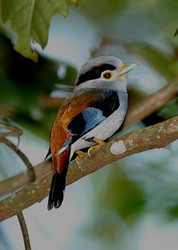
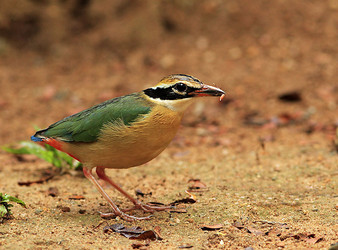
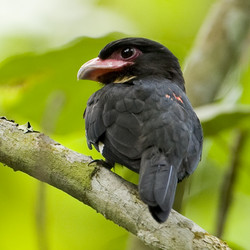


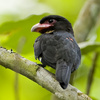


 Go to quick links
Go to quick search
Go to navigation for this section of the ToL site
Go to detailed links for the ToL site
Go to quick links
Go to quick search
Go to navigation for this section of the ToL site
Go to detailed links for the ToL site